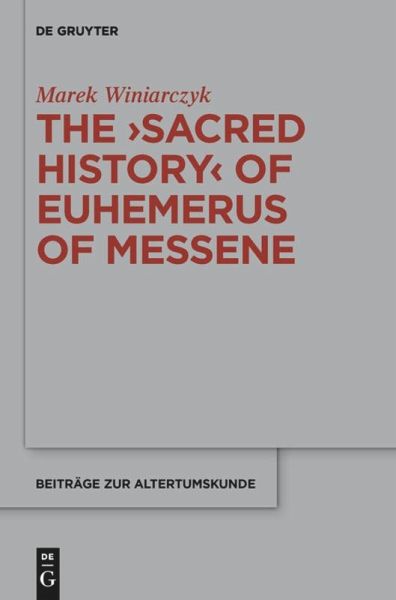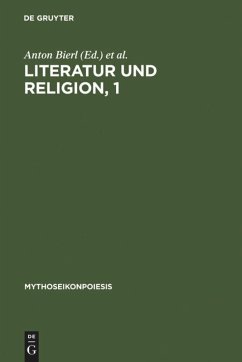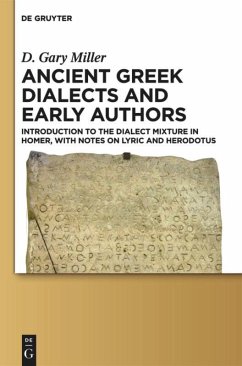
The "Sacred History" of Euhemerus of Messene

PAYBACK Punkte
66 °P sammeln!
In his utopian novel Hiera Anagraphe (Sacred History) Euhemerus of Messene (ca. 300 B.C.) describes his travel to the island Panchaia in the Indian Ocean where he discovered an inscribed stele in the temple of Zeus Triphylius. It turned out that the Olympian gods (Uranos, Kronos, Zeus) were deified kings. The travels of Zeus allowed to describe peoples and places all over the world.Winiarczyk investigates the sources of the theological views of Euhemerus. He proves that Euhemerus' religious views were rooted in old Greek tradition (the worship of heroes, gods as founders of their own cult, tom...
In his utopian novel Hiera Anagraphe (Sacred History) Euhemerus of Messene (ca. 300 B.C.) describes his travel to the island Panchaia in the Indian Ocean where he discovered an inscribed stele in the temple of Zeus Triphylius. It turned out that the Olympian gods (Uranos, Kronos, Zeus) were deified kings. The travels of Zeus allowed to describe peoples and places all over the world.
Winiarczyk investigates the sources of the theological views of Euhemerus. He proves that Euhemerus' religious views were rooted in old Greek tradition (the worship of heroes, gods as founders of their own cult, tombs of gods, euergetism, rationalistic interpretation of myths, the explanations of the origin of religion by the sophists, the ruler cult). The description of the Panchaian society is intended to suggest an archaic and closed culture, in which the stele recording res gestae of the deified kings might have been preserved.
The translation of Ennius' Euhemerus sive Sacra historia (ca. 200 - ca. 194) is a free prose rendering, which Lactantius knew only indirectly. The book is concluded by a short history of Euhemerism in the pagan, Christian and Jewish literature.
Winiarczyk investigates the sources of the theological views of Euhemerus. He proves that Euhemerus' religious views were rooted in old Greek tradition (the worship of heroes, gods as founders of their own cult, tombs of gods, euergetism, rationalistic interpretation of myths, the explanations of the origin of religion by the sophists, the ruler cult). The description of the Panchaian society is intended to suggest an archaic and closed culture, in which the stele recording res gestae of the deified kings might have been preserved.
The translation of Ennius' Euhemerus sive Sacra historia (ca. 200 - ca. 194) is a free prose rendering, which Lactantius knew only indirectly. The book is concluded by a short history of Euhemerism in the pagan, Christian and Jewish literature.














